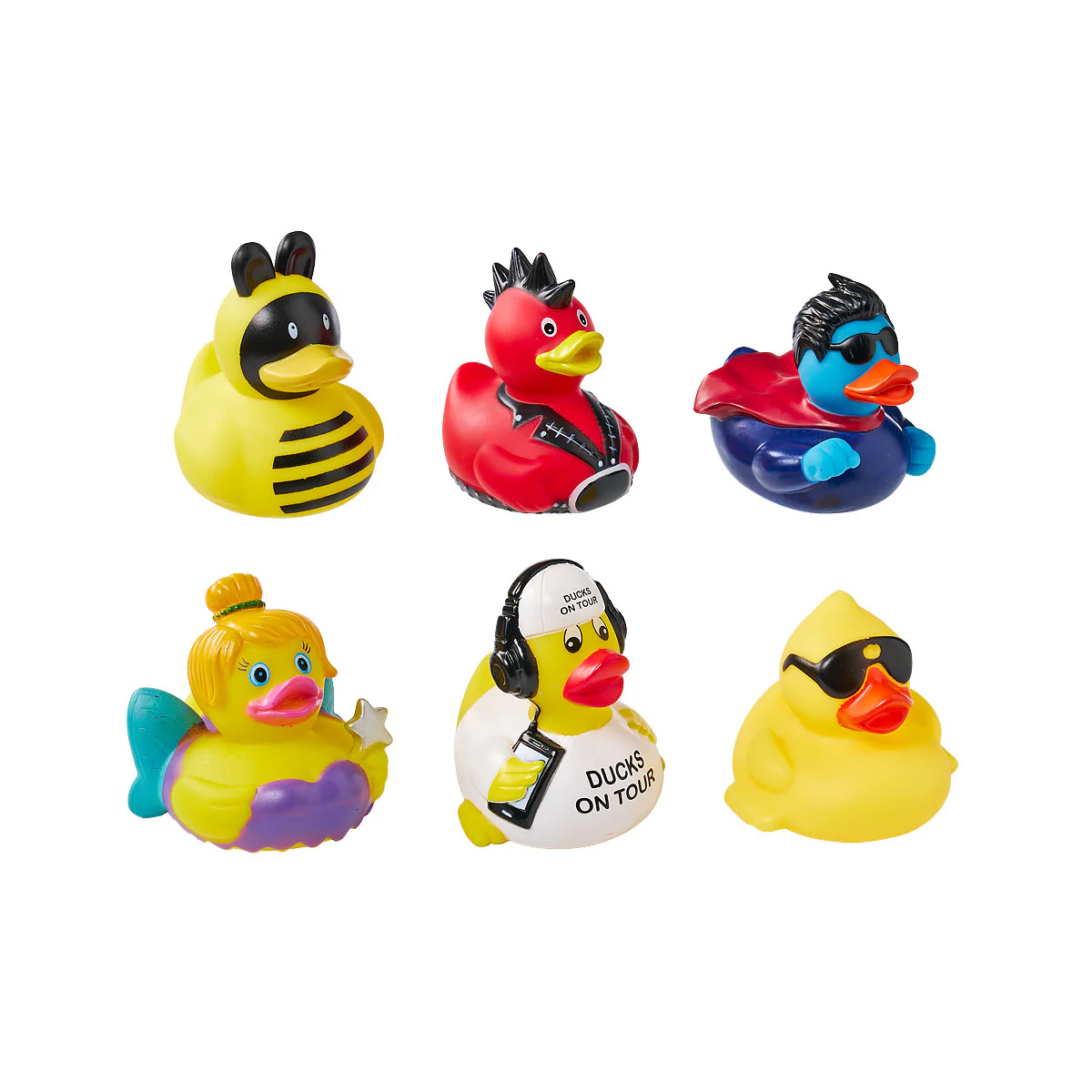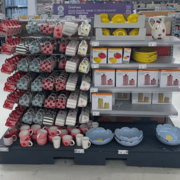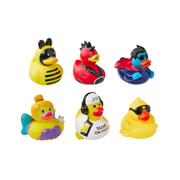
Something small, bright, and quacky has captured the imagination of Australians everywhere.
People are visiting stores more than once a week, shelves are emptying in record time, and collectors are grinning from ear to ear.
For just $2.50, a humble rubber duck has become the unlikely star of a nationwide trend.
The Reject Shop's Novelty Duckies
The Reject Shop's Novelty Duckies have turned an ordinary toy into a national obsession.
Dressed in more than 25 costumes—from doctors and chefs to cowboys, superheroes, ballerinas, and fairies—these ducks aren’t just bath-time companions, they are mini treasures waiting to be discovered.
'The 'trendification' of collectibles can come about from initial feelings of fun or nostalgia triggered by an item, then someone else spots it and it sort of snowballs from there.'
Shoppers joked about needing bigger bathrooms or declared, 'Oh my god, I need them all,' as social media filled with pictures of colourful collections.
The Science Behind the Obsession
Rubber ducks evoke nostalgia, reminding many adults of childhood bath-time memories, which creates emotional attachment that lasts into adulthood.
Professor Cathrine Jansson-Boyd explained that these feelings often trigger trendification, turning small items into status symbols that shoppers feel compelled to own.
For seniors, affordability plays a big role.
At $2.50 each, these ducks offer excitement and collectibility without stretching a pension budget, unlike some high-priced collectibles that can cost hundreds of dollars.
Cruising with Duckies
The trend has spilled beyond store shelves, particularly among cruise-goers who hide ducks for fellow passengers as part of playful scavenger hunts.
What began as a small act of kindness has grown into a popular tradition on many cruise lines.
The cruise duck phenomenon
It's not uncommon for cruise passengers to bring dozens of rubber ducks on board to hide in strategic places around the ship.
Cruise ships offer plenty of nooks, crannies, and public areas where ducks can be hidden—on stairwells, in elevators, near pools, or in lounges, ensuring other passengers stumble upon them during their explorations.
Imagine discovering a tiny superhero duck tucked beside the ship's library or a chef duck waiting in the dining room.
More Than Child’s Play
Duck World stores reported that collectors were equally divided between tourists, gift seekers, families, and people across age groups.
Rubber ducks found their way into classrooms as teaching rewards, onto office desks as stress relievers, and even into cars for the 'Jeep ducking' trend, where Jeep owners leave ducks on other Jeeps with notes.
Teachers tagged colleagues on social media, writing, 'We should get these for our class as Christmas presents,' while others stocked up for festive gifting.
Their versatility—sparking conversation, easing stress, and acting as thoughtful gifts—adds to their universal appeal.
Why collecting appeals to us
- Nostalgia triggers emotional connections to childhood memories
- Affordable collecting offers excitement without financial stress
- Social media amplifies trends, creating community around shared interests
- The hunt element provides ongoing entertainment and purpose
Small acts of kindness, like hiding ducks, boost wellbeing for all involved.
Part of a Bigger Picture
This duck mania aligns with a broader trend of affordable collectibles going viral.
Earlier shortages of Stanley-style cups and viral recipe ingredients showed that people were prioritising small, mood-boosting purchases even while budgeting carefully.
The Reject Shop has tapped into this with novelty homewares, from Amalfi Coast-style dipping bowls for $2 to camera-shaped teapots for $14.
With plans for a multi-million-dollar expansion adding 700 new stores, The Reject Shop is poised to deliver more limited-edition ranges and viral collectibles.
After successful series like Bistrot Bee and French Provincial, the retailer is now firmly competing with Kmart and Target in the affordable homewares space.
For now, it’s the $2.50 Novelty Duckies that have captured our hearts.
Whether for a cruise, a classroom, or a cheerful bathroom shelf, these little characters offer the simple joy of collecting, sharing, and spreading happiness for just a few dollars.
What This Means For You
Rubber ducks spark nostalgia and emotional attachment, making them irresistible to collectors of all ages.
Their affordability means that anyone can enjoy collecting without worrying about financial stress, allowing for small, joyful indulgences.
The thrill of the hunt and the scarcity of certain characters keep people coming back to stores, turning each visit into a mini adventure.
Beyond shopping, these trends have spread into cruises, classrooms, and social acts of kindness, fostering community and shared enjoyment.
For the audience, this means that joining the duck craze isn’t just about collecting a cute toy—it’s about embracing fun, connecting with others, and creating small moments of happiness in everyday life.
If you’ve enjoyed discovering the charm of these $2.50 rubber ducks, you might be surprised to learn that other childhood toys can also hold hidden value.
Tracking down these nostalgic items can be a fun hunt, much like searching for rare duck characters in stores or on cruises.
For a closer look at which toys could be worth a fortune—and how to find them—check out this insightful guide.
Read more: Those childhood toys stuck in your house could be worth a fortune—but finding them will cost you
The real question isn’t whether you need a rubber duck collection—it’s whether you’ve dared to hunt for that first elusive duck yet.







